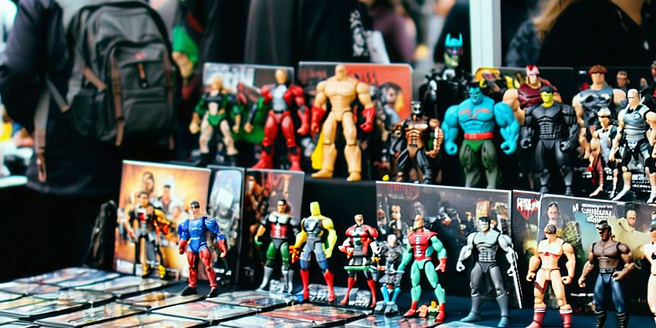Collectible Freebie Items

The History and Evolution of Freebies
| Year | Event | Impact |
| 1920s | Introduction of cereal prizes | Boosted cereal sales significantly |
| 1950s | Rise of promotional giveaways | Increased brand awareness |
| 1980s | Fast food tie-in toys | Revolutionized marketing strategies |
| 2000s | Digital freebies emerge | Changed collection dynamics |
| 2010s | Social media promotions | Expanded audience reach |
| 2020s | NFT collectibles rise | Shifted to digital ownership |
Popular Collectible Freebie Categories
Collectible freebies have captured the hearts of people worldwide. Among the top freebie categories are fast food toys, which often become nostalgic treasures. Secondly, promotional items like branded pens and pins attract both collectors and those who cherish memorabilia. Television and movie tie-ins, including action figures and trading cards, are also prominent in the collectible landscape, connecting fans with their favorite franchises. Additionally, event-exclusive items, such as badges or limited-release posters from conventions, hold significant appeal. Furthermore, digital collectibles like downloadable content, once limited in novelty, now flourish in exclusivity. With a growing interest in sustainability, eco-friendly freebies are also gaining traction, providing an Earth-conscious collection choice. Sports team giveaways, ranging from bobbleheads to rally towels, resonate deeply with avid supporters. Finally, nostalgia-driven items, often distributed as part of anniversary celebrations, continue to lure collectors into the lure of the past.
The Psychological Appeal of Freebies
Collectible freebies often tap into a psychological blend of nostalgia, rarity, and personal achievement. These diminutive items have a potent ability to evoke cherished childhood memories, sparking joy and warmth. Collectors often feel a personal connection to each piece, as if each freebie tells its own fragment of their life’s story. The thrill of the hunt also plays a crucial role; the prospect of acquiring a rare or exclusive item excites and motivates collectors. Moreover, the act of collecting can fulfill a deeper need for control and completion—the satisfaction of meticulously organizing and expanding a collection. Many find a sense of community among fellow enthusiasts, leading to shared experiences and friendships. The intrinsic challenge to acquire all items in a specific series further fuels ambition and perseverance, rewarding the collector with a sense of accomplishment and status within their chosen community.
Starting a Collection: Beginner Tips
Starting a collectible freebie collection is an exciting journey, but knowing where to begin can feel overwhelming. First, choose a category or theme that genuinely interests you. This initial step helps maintain enthusiasm as your collection grows. Next, set a budget that aligns with your financial goals, considering factors such as common market prices and potential shipping costs. Contact local and online communities where you can learn from experienced collectors and discover new opportunities. Building a supportive network can open doors to exclusive trades and deals. Attend exhibitions, fairs, or events where your chosen collectibles are featured or distributed. Once you’ve acquired a few items, organize them thoughtfully, whether on display or in storage. Consider keeping a catalog to track each piece’s details, including origin, value, and condition. Lastly, be patient—collections are labors of love built over time, so enjoy the process and savor every acquisition.
Rarity vs. Demand: Freebie Value
Understanding the value of collectible freebies often comes down to evaluating rarity and demand. An item’s rarity can significantly influence its perceived worth. Limited edition or run production items typically carry a higher value due to their scarcity in the market. However, rarity alone doesn’t dictate demand. An item’s desirability, driven by popular culture or historic events, can elevate its value even if it’s not particularly rare. For example, tie-in toys linked to iconic or currently trending franchises may have less rarity but face high demand. The item’s condition is another determining factor; collectors tend to prefer pristine pieces, with packaging intact when applicable. Moreover, provenance or the item’s backstory can enhance its collectibility, adding uniqueness or historical interest. Understanding these aspects helps collectors make informed decisions about purchases and trades, ensuring their collections remain valuable and culturally significant.
Where to Find Unique Freebies
For collectors on the hunt for rare and unique freebie items, diversifying search techniques is key. Attending industry conventions, such as comic book or memorabilia expos, often yields the chance to find exclusive giveaways tied to new releases. Browsing online auction sites can also uncover items not available in other venues, though thorough research ensures authenticity and fair pricing. Estate sales or local auctions often harbor unexpected finds, as households may part with items overlooked by their previous owners. Networking with fellow enthusiasts, whether through forums or clubs, provides tips on secretive or less publicized events distributing collectibles. Engaging in social media groups and following brand accounts can alert you to upcoming promotions or limited time offers. Always be ready to act quickly, as rare freebies can disappear quickly, but exercise patience and diligence, waiting for the right opportunity to add an exceptional piece to your collection.
Legal and Ethical Freebie Collecting
Navigating the legal and ethical landscape of freebie collecting requires conscientiousness and awareness. Firstly, ensure the acquisition of any collectible is legal and respects intellectual property laws; counterfeit items not only devalue your collection but can result in legal consequences. Further, obtain permissions where necessary, especially when older items are involved and original rights holders might still claim interests. Ethically, it’s essential to respect the community and collectors by abstaining from hoarding excessive quantities purely for profit. Additionally, participate in trades and sales that fairly reflect the item’s value and condition. Transparency in transactions fosters trust and reputation. Be conscious of the impact on brands and enterprises when participating in mass acquisitions from promotional events, balancing personal interests with their business integrity. It’s also prudent to consider the cultural context of items to avoid inadvertent appropriation or offense.
Online Collector’s Resources
Joining online communities and utilizing digital resources can significantly enhance your experience as a collector. Various forums and social media groups provide platforms for sharing information, experiences, and leads on exclusive items or upcoming events. Websites dedicated to showcasing specific collectibles offer guides, price lists, and sometimes marketplaces tailored to these items. Engaging with these communities provides access to a wealth of knowledge shared by seasoned collectors and potentially rare finds from trusted vendors. Moreover, mobile apps specifically designed for tracking collections keep your inventory organized and accessible. Through blogs and vlogs, collectors share stories and strategies, offering inspiration and practical advice to newcomers. Online auctions and e-commerce sites, while requiring careful appraisal skills, often reserve hidden gems waiting to be discovered. Utilize these resources to network, collaborate, and continually learn within the dynamic world of collectible freebies.
Storing Your Collectibles
Properly showcasing and storing collectible freebies is vital to preserving their value and appearance. Start by evaluating the display setting, ensuring the environment avoids direct sunlight or extreme temperatures, both of which can fade colors and damage materials. For display purposes, consider using transparent cases or shelves that provide protection while allowing visibility. When storing items, protective materials like acid-free paper or inert plastics prevent deterioration caused by dust or moisture. Attach clear labels to items or storage containers for easy identification and to maintain organization. Regularly inspect items for any signs of wear or damage, addressing these issues promptly to avoid further harm. Develop a tracking system, whether digital or physical, cataloging each item’s details, including its condition over time. These practices help maintain the integrity of your collection, ensuring its preservation for future enjoyment or potential resale.
Future of Collectibles: Digital and Virtual
The landscape of collectibles is rapidly evolving with the onset of digital and virtual freebies. Non-fungible tokens (NFTs) have opened new horizons, enabling collectors to own unique digital assets with provable authenticity and scarcity. This innovation extends collectibles beyond physical limits, with possibilities ranging from virtual trading cards to digital art. Companies are experimenting with hybrid events and promotions to distribute digital freebies, often making them part of a larger experience. Virtual reality spaces introduce immersive environments where collectors can interact with digital replicas of their physical collections, expanding traditional showcases. However, as the world leans into these novelties, challenges such as security, owned platforms, and ecological impact must be navigated. The integration of blockchain technology promises transparency and traceability, key enablers of trust in this digital transformation. The future of collectibles is not only promising but is reshaping the very boundaries of ownership and community.
